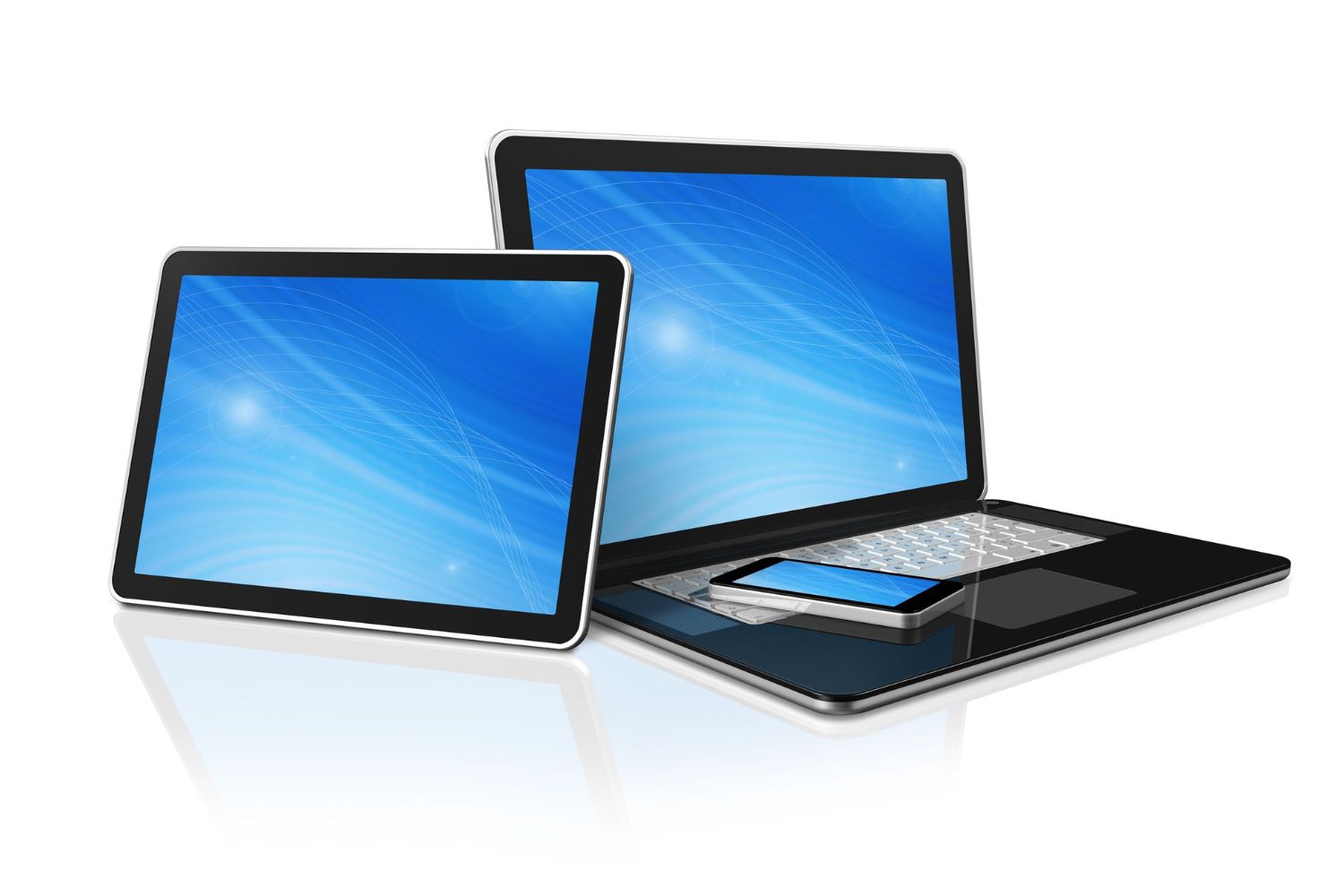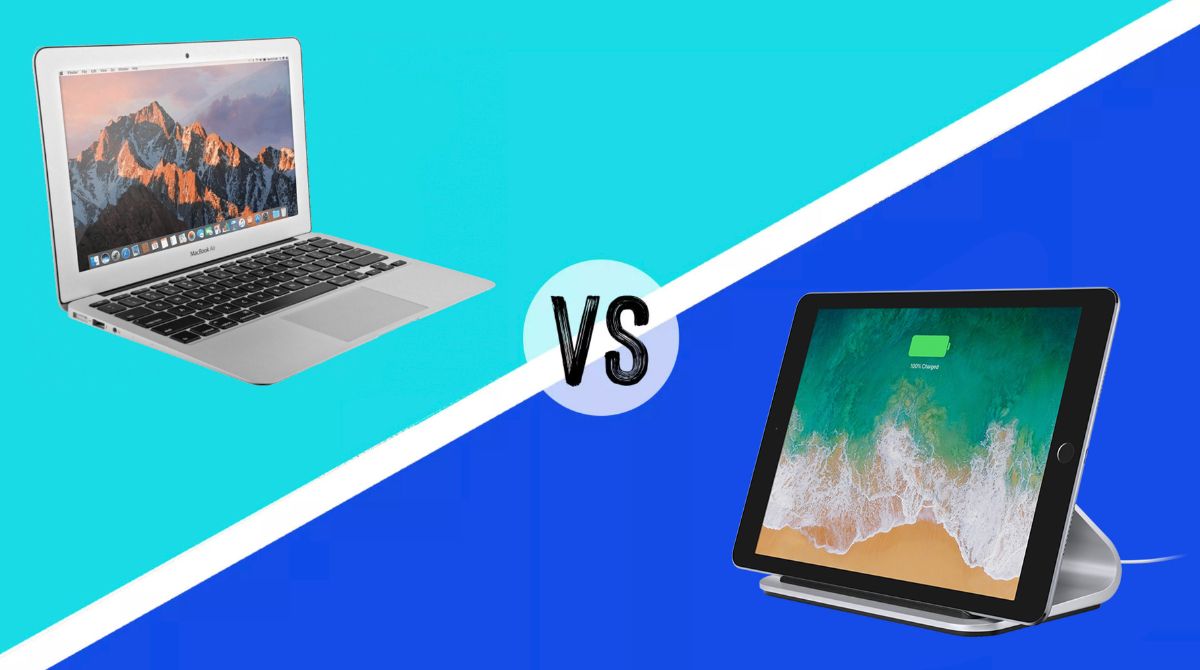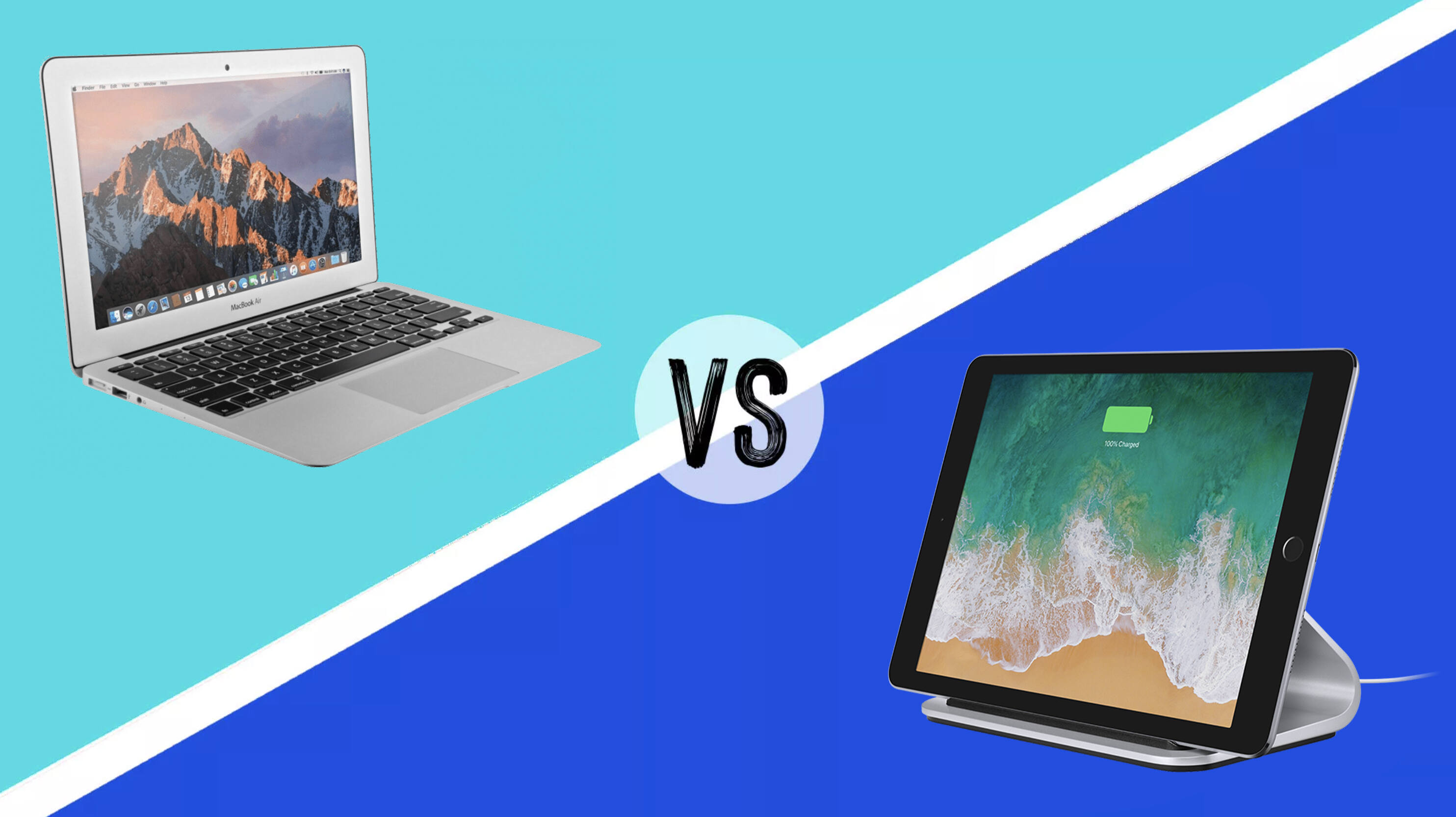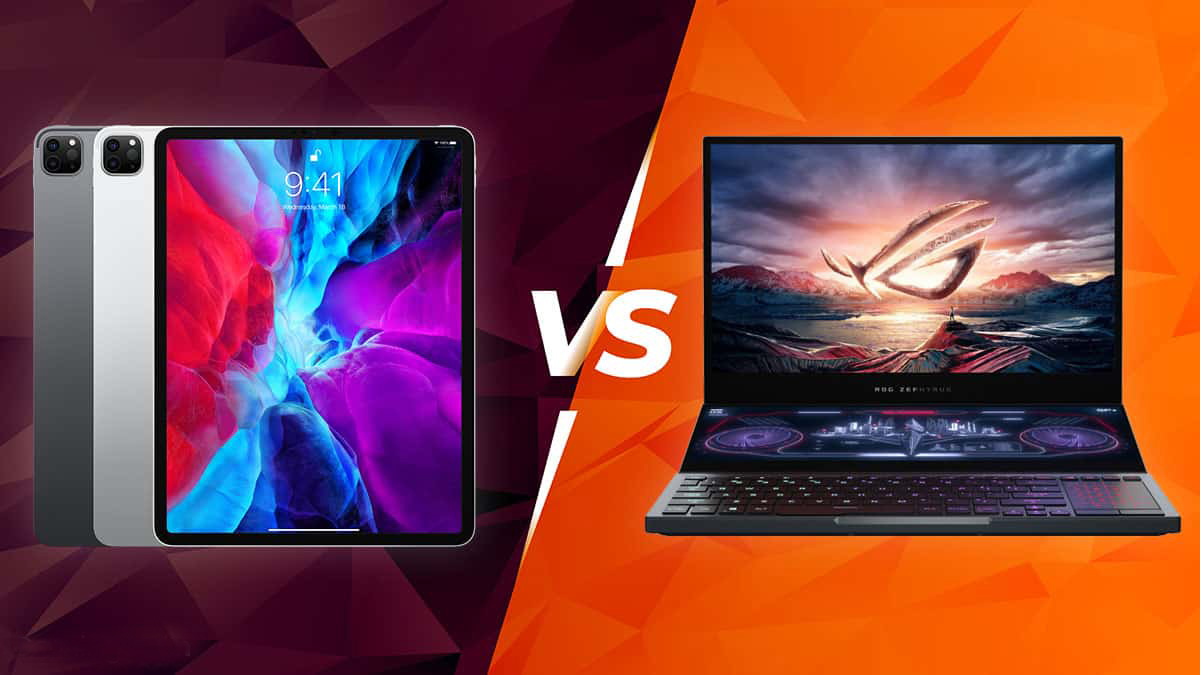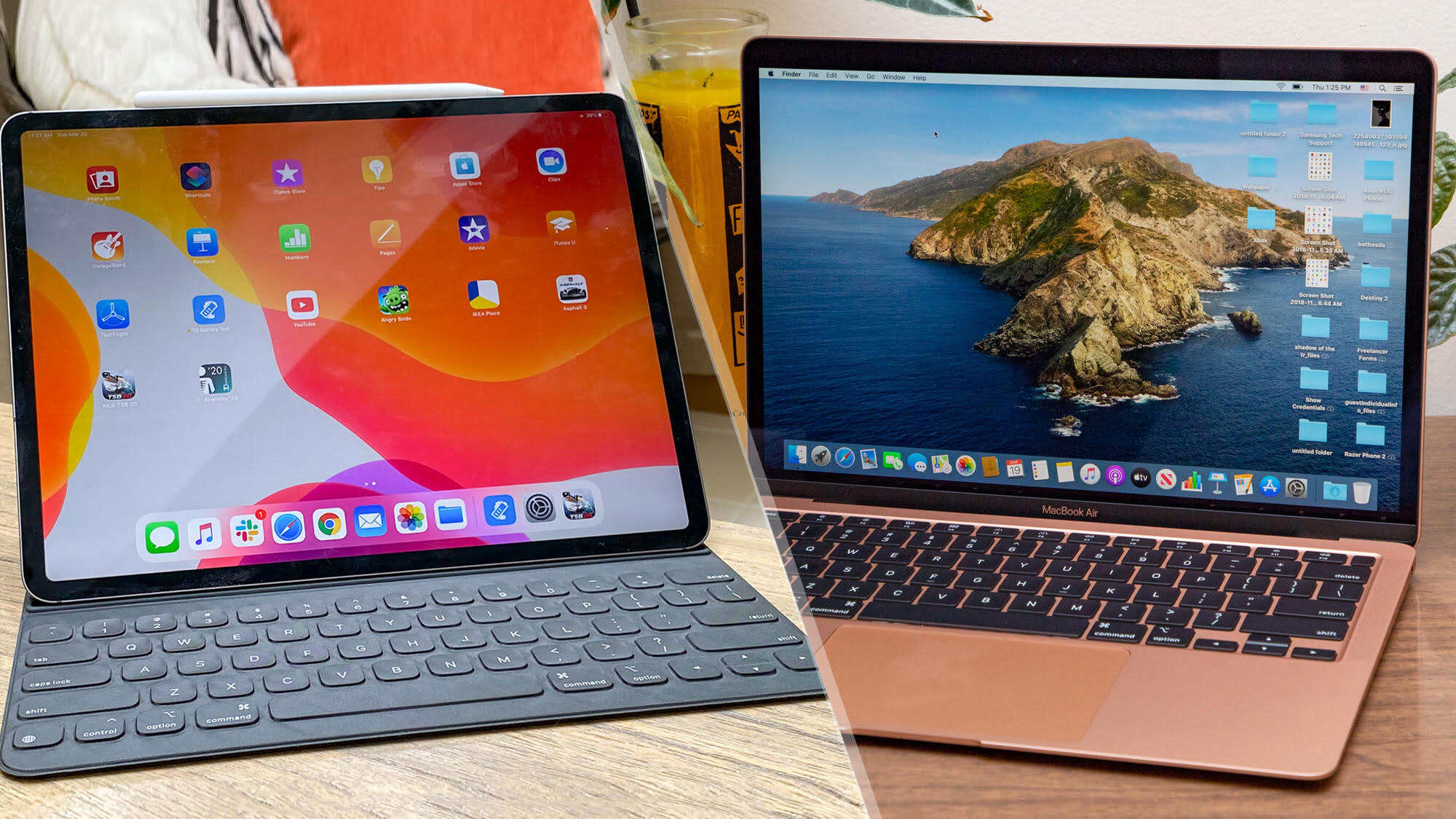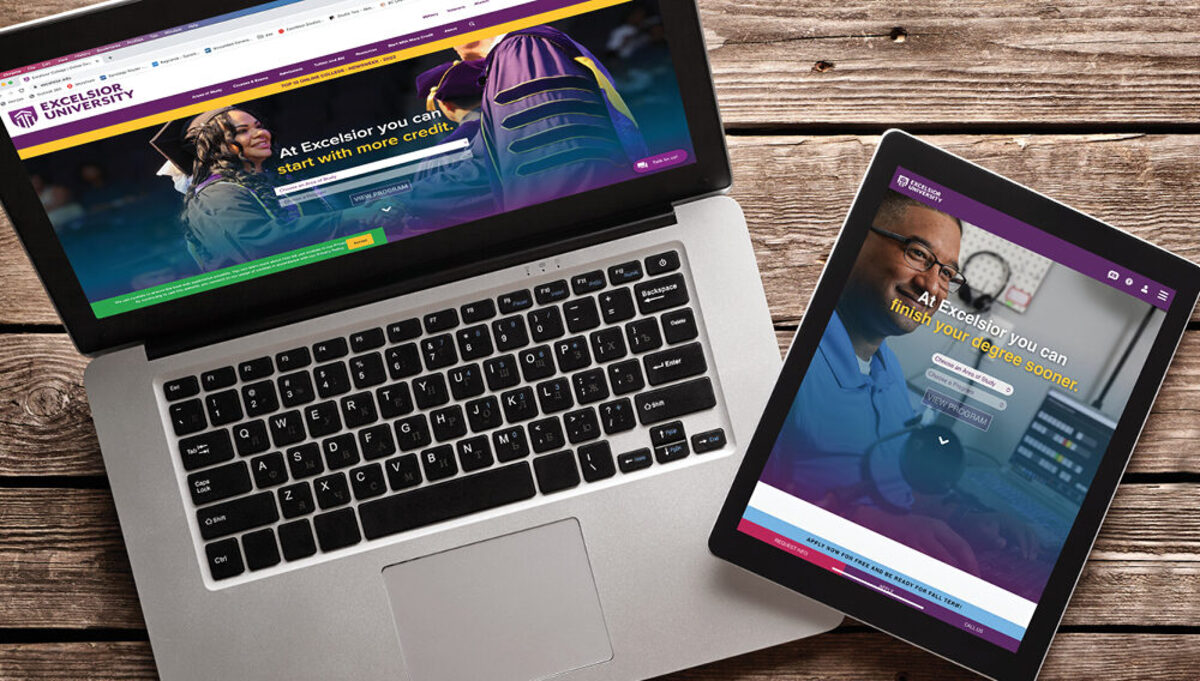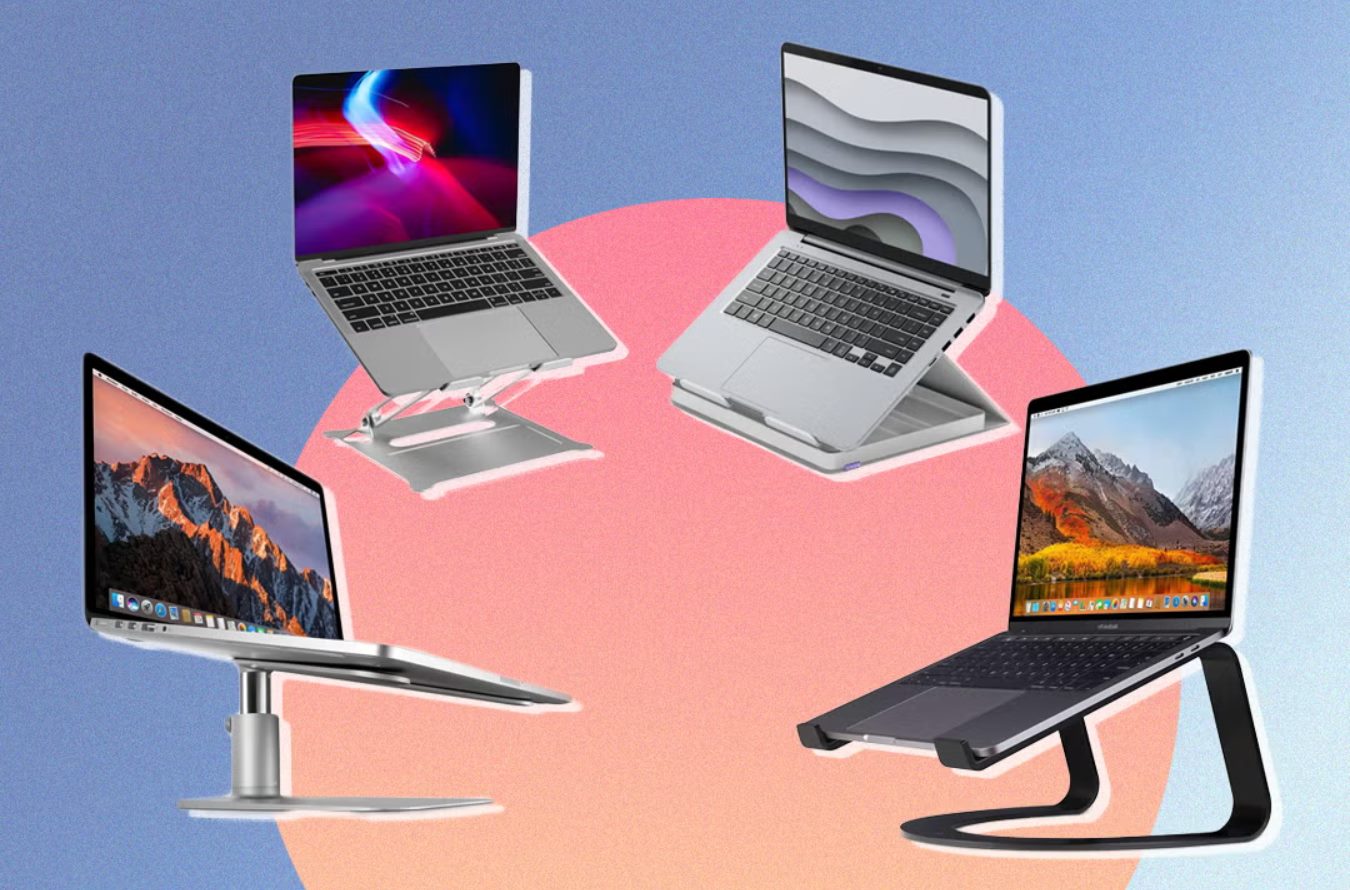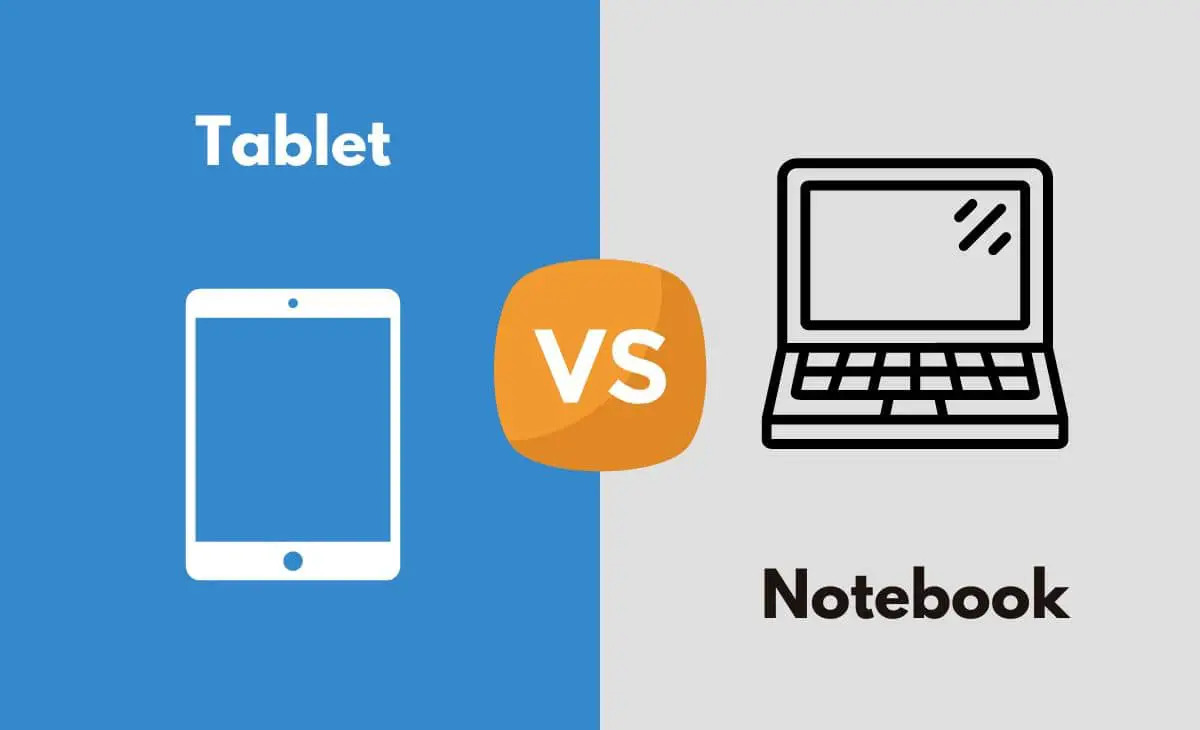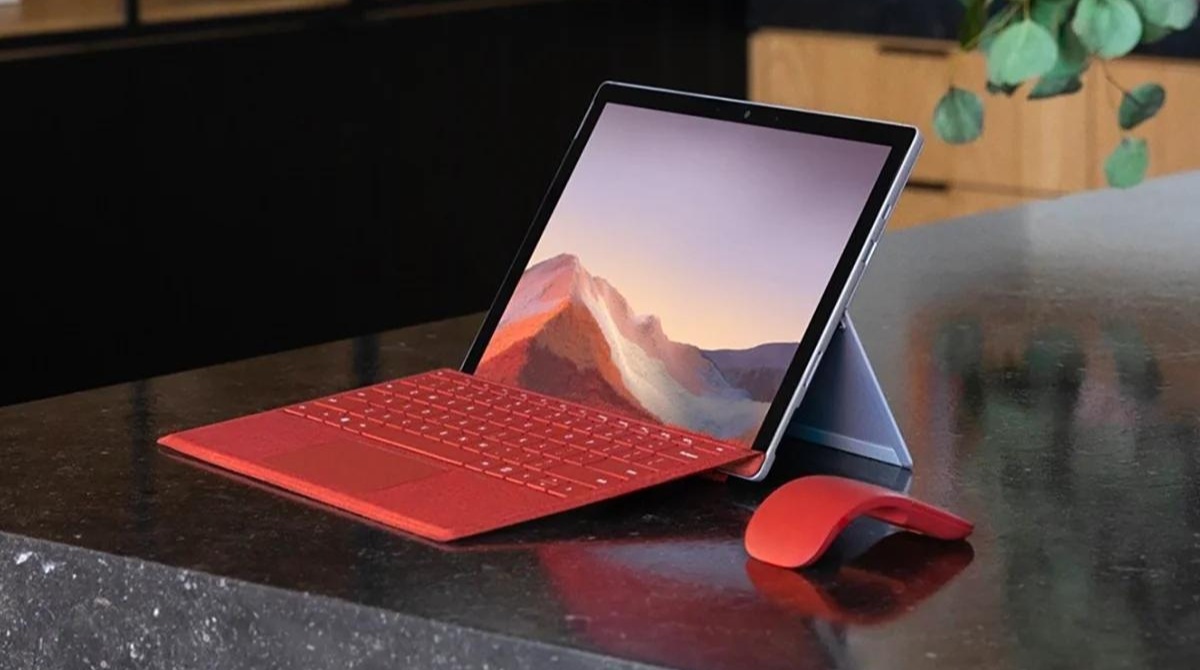Introduction
When it comes to choosing between a laptop or a tablet, many find themselves grappling with this decision. Both devices have their unique features and benefits, but determining which one is better ultimately depends on individual needs and preferences. In this article, we will explore the advantages of laptops and tablets, comparing factors such as portability, performance, functionality, usability, battery life, and price. By analyzing these aspects, you will be equipped with the necessary information to make an informed decision.
Advancements in technology have led to the proliferation of laptops and tablets, revolutionizing the way we work, study, and entertain ourselves. Laptops are a popular choice among professionals, students, and those who require a device with robust computing power. They offer a wide range of features, including a physical keyboard, larger display, and the ability to run resource-intensive applications. On the other hand, tablets have gained immense popularity due to their compact size, lightweight design, and intuitive touch-based interface. They are preferred by those seeking portability and convenience, making them ideal for casual web browsing, media consumption, and on-the-go productivity.
Looking deeper into the advantages of laptops, their most significant strength lies in their power and versatility. With a laptop, you have access to a fully functional operating system, such as Windows or macOS, allowing you to efficiently multitask across various applications. Laptops also tend to have more storage capacity, making them an excellent choice for storing files, documents, and multimedia. Additionally, the presence of a physical keyboard and a large display enhances typing comfort and overall user experience.
On the other hand, tablets excel in terms of portability. They are lightweight, slim, and easy to carry, making them ideal for individuals who are constantly on the move. Tablets offer seamless integration with online services, allowing users to access cloud storage, email, and social media platforms effortlessly. Their touchscreens provide a unique and immersive interaction experience, particularly beneficial for reading e-books, browsing through digital magazines, or drawing using a stylus.
As we delve into the comparison between laptops and tablets, it’s important to consider factors like performance. Laptops usually have more robust processors and greater RAM capacity, enabling them to handle resource-intensive tasks efficiently. This makes them suitable for demanding applications, gaming, video editing, and other computationally intensive activities. Tablets, on the other hand, are designed for lighter tasks, such as web browsing, media consumption, and basic productivity. While they may not match the processing power of laptops, tablets offer a smooth and seamless user experience for everyday tasks.
In terms of functionality, laptops typically offer a wider range of features. They have a plethora of ports and connectivity options, allowing for easy connection to external peripherals such as printers, scanners, and external displays. Laptops also provide a more extensive software ecosystem, with access to a vast array of applications and productivity tools. Tablets, although limited in terms of ports, often come with built-in cameras, speakers, and microphones, making them suitable for video conferencing and entertainment purposes.
Advantages of Laptops
Laptops offer a host of benefits that make them a preferred choice for many individuals. Here are some of the advantages of owning a laptop:
- Power and Versatility: Laptops are equipped with powerful processors and ample RAM, allowing for smooth multitasking and efficient handling of complex software applications. Whether you are a student, professional, or creative individual, laptops provide the computing power necessary to tackle demanding tasks such as graphic design, programming, and video editing.
- Physical Keyboard and Larger Display: Unlike tablets, laptops come with a built-in physical keyboard, which offers a more tactile typing experience and greater productivity for tasks that require extensive typing. Additionally, laptops typically have a larger screen size, making them suitable for tasks that require a generous display area, such as document editing, photo editing, and watching movies.
- Storage Capacity: Laptops typically offer more storage space compared to tablets, allowing users to store a significant amount of files, documents, photos, and videos. This makes laptops a practical choice for individuals who require ample storage for their work, creative projects, or multimedia collections.
- Connectivity and Expansion Options: With a laptop, you have the freedom to connect external devices and peripherals. Laptops are equipped with a range of ports, including USB ports, HDMI ports, and audio jacks, allowing you to easily connect printers, scanners, external hard drives, and other accessories. This flexibility enables you to expand your laptop’s capabilities and customize your setup according to your specific needs.
- Software Ecosystem: Laptops have access to a wide variety of software applications, including productivity suites, design software, video editing tools, and games. Popular operating systems, such as Windows, macOS, and Linux, provide a vast array of software options to cater to different user requirements. This extensive software ecosystem ensures that you can find the right tools and applications to enhance your productivity and creativity.
Overall, laptops offer a combination of power, versatility, and functionality that makes them an essential tool for professionals, students, and anyone who requires a full-fledged computing device. Whether you need to work on complex projects, stay productive on the go, or enjoy multimedia content, laptops provide the performance and features required to meet your needs.
Advantages of Tablets
Tablets have become increasingly popular due to their unique advantages and features. Here are some of the advantages of owning a tablet:
- Portability: One of the most significant advantages of tablets is their portability. Tablets are lightweight, slim, and easy to carry, making them perfect for individuals who are always on the move. Whether you are traveling, commuting, or attending meetings, tablets offer the convenience of having a compact device that can be easily slipped into a bag or held in one hand.
- Intuitive Touch-Based Interface: Tablets feature touchscreens that provide a seamless and intuitive user experience. The touch interface makes navigation and interaction with various apps and content a breeze. It is especially beneficial for activities like browsing the web, reading e-books, playing games, and using creative apps that leverage touch and gestures.
- Instant On and Long Battery Life: Tablets are designed for quick access and prolonged battery life. They usually have instant-on capabilities, allowing you to turn them on and start using them right away, without waiting for boot-up time. Additionally, tablets typically offer long battery life, enabling extended use without the need for frequent charging.
- Entertainment and Media Consumption: Tablets are excellent devices for entertainment purposes. With their sleek and vibrant displays, tablets provide an immersive experience for watching movies, streaming videos, and viewing photos. They also offer easy access to various digital content platforms, including e-books, audiobooks, music streaming services, and online video streaming platforms.
- Integration with Cloud Services: Tablets seamlessly integrate with cloud services, allowing users to access their files, documents, and photos from anywhere with an internet connection. Whether it’s accessing documents from cloud storage, synchronizing calendar events, or backing up photos to the cloud, tablets offer easy and convenient access to your digital content.
- Video Conferencing and Communication: Tablets come equipped with built-in cameras, speakers, and microphones, making them suitable for video conferencing and communication. Whether you need to attend virtual meetings, make video calls, or participate in online classes, tablets provide a convenient platform for engaging in face-to-face interactions.
In summary, tablets offer a portable, intuitive, and versatile computing experience. They are ideal for individuals who prioritize mobility, convenience, and media consumption. Tablets provide a seamless integration of entertainment, communication, and productivity features in a compact and user-friendly package.
Comparison of Portability
When it comes to portability, both laptops and tablets have their advantages and considerations. Let’s compare the portability factors of laptops and tablets:
- Size and Weight: Tablets are known for their lightweight and slim design, making them highly portable. They are typically thinner and lighter than laptops, allowing for easy carrying and handling. On the other hand, laptops tend to be bulkier due to the inclusion of a physical keyboard and a larger display. However, advancements in laptop design have led to more compact and lightweight models, narrowing the portability gap between laptops and tablets.
- Form Factor: Tablets are designed to be handheld devices, with a touch-based interface that is intuitive and easy to use on the go. They have a compact form factor, making them convenient for casual use and on-the-move tasks. Laptops, on the other hand, have a clamshell design with a built-in keyboard and a hinge, which allows for a more ergonomic typing experience and a larger display area. This form factor makes laptops better suited for tasks that require extensive typing or working with complex software.
- Battery Life: One of the advantages of tablets over laptops is their longer battery life. Tablets are optimized for power efficiency and can offer several hours of continuous use on a single charge, making them great for travelers or individuals who are frequently away from power outlets. Laptops, although improving in battery life, generally have shorter battery durations and may require more frequent charging, especially if performing resource-intensive tasks.
- Access to Mobile Data: Tablets often come with options for cellular connectivity, allowing users to access the internet through mobile data networks. This feature enables users to stay connected even when Wi-Fi is not available, making tablets a convenient choice for individuals who require constant internet access while on the go. Laptops, on the other hand, typically rely on Wi-Fi connectivity, although some models offer cellular options as well.
- Flexibility: Both laptops and tablets offer varying degrees of flexibility when it comes to portability. Tablets excel in situations where lightweight and casual use are prioritized, such as browsing the web, consuming media, or quickly accessing information. Laptops, on the other hand, provide more flexibility in terms of task versatility and can handle a wider range of professional or creative tasks that require a full-fledged computer experience.
Ultimately, the choice between a laptop and a tablet in terms of portability depends on your specific needs and lifestyle. If you value extreme portability, casual web browsing, and entertainment on the go, a tablet may be the ideal choice. On the other hand, if you require a device that can handle demanding tasks, provides a larger display, and offers more extensive functionality, a laptop may be the better option.
Comparison of Performance
When comparing the performance of laptops and tablets, it’s important to consider various factors that determine their capabilities. Let’s examine the performance aspects of both devices:
- Processing Power: Laptops generally offer more processing power compared to tablets. They are equipped with powerful processors that can handle resource-intensive tasks, such as video editing, gaming, and running complex software applications. Tablets, while improving in terms of processing power, are designed for lighter tasks and may not match the performance levels of laptops.
- Memory and Storage: Laptops often have greater memory (RAM) capacity than tablets, allowing for smoother multitasking and better performance when handling multiple applications simultaneously. Additionally, laptops generally provide more storage space, allowing users to store a larger number of files, documents, and multimedia content. Tablets, although they may have lower storage capacity, often rely on cloud services for storing and accessing files.
- Graphics Performance: Laptops tend to have better graphics performance than tablets. This is particularly important for tasks such as graphic design, gaming, and video editing that require high-quality visuals and rendering capabilities. Laptops typically come with dedicated graphics cards, which offer enhanced graphical performance, while tablets rely on integrated graphics processors that are optimized for power efficiency.
- Software Compatibility: Laptops, with their full-fledged operating systems like Windows or macOS, offer compatibility with a wide array of software applications and tools. This makes them suitable for individuals who require specific software for professional or creative work. While tablets have their own app ecosystems, they may have limitations in terms of software availability or functionality compared to laptops.
- Multitasking and Productivity: Laptops excel in multitasking capabilities, allowing users to run multiple applications simultaneously without significant performance degradation. With a physical keyboard and windowed interfaces, laptops provide a work environment similar to a desktop computer, making them ideal for productivity-oriented tasks such as document editing, data analysis, and programming. Tablets are better suited for lightweight tasks and casual productivity, although some models offer features like split-screen multitasking.
It’s important to note that while laptops generally outperform tablets in terms of processing power and multitasking capabilities, tablets provide a more streamlined and focused experience for specific tasks. Tablets are particularly suitable for mobile productivity, entertainment, web browsing, and content consumption on the go. Laptops, on the other hand, offer the performance and flexibility needed for demanding tasks that require a full-fledged computer experience.
Comparison of Functionalities
When comparing the functionalities of laptops and tablets, it’s important to consider the unique features and capabilities that each device offers. Let’s examine the functionalities of both laptops and tablets:
- User Interface: Tablets feature a touch-based interface that is intuitive and easy to use. This allows for seamless navigation through apps, zooming in and out of content, and performing gestures. Laptops, on the other hand, rely on a keyboard and trackpad or mouse for input, providing a more traditional and familiar user interface. The choice between the two depends on personal preference and the type of tasks you frequently perform.
- Input Methods: Laptops come with a physical keyboard, which offers a tactile typing experience and is essential for tasks that require extensive typing, such as writing documents or coding. Tablets, on the other hand, use an on-screen keyboard or external keyboard attachments, which may not offer the same level of comfort and speed as a physical keyboard. However, tablets often provide support for stylus input, making them suitable for digital drawing, note-taking, and creative tasks.
- Software Ecosystem: Laptops have access to a wide range of software applications due to their compatibility with fully-fledged operating systems such as Windows, macOS, and Linux. This allows users to install and utilize a variety of productivity tools, design software, video editing applications, and games. Tablets have their own app ecosystem, offering a range of apps tailored for their touch-centric interface, including productivity apps, media and entertainment apps, and mobile games.
- Connectivity and Ports: Laptops provide a wider range of connectivity options, including multiple USB ports, HDMI ports, Ethernet ports, and SD card slots. This allows for seamless connection to various external devices and peripherals, such as printers, external displays, and storage devices. Tablets typically have fewer ports but often come with built-in cameras, speakers, and microphones, making them suitable for video conferencing and media consumption.
- Touchscreen and Gesture Support: Tablets have touchscreen displays that offer an immersive and interactive user experience. They support gestures such as pinching, swiping, and tapping, making it easy to navigate through apps, zoom in on content, and perform other touch actions. While laptops with touchscreens are available, they are less common and may not offer the same level of touch-based functionality as tablets.
- Integration with Cloud Services: Both laptops and tablets offer integration with cloud services, providing users with access to their files, documents, and media from anywhere with an internet connection. This allows for seamless synchronization between devices and easy sharing of files. Tablets, with their portable nature and always-on connectivity options, are particularly convenient for accessing cloud services and staying connected to your digital content on the go.
The choice between a laptop and a tablet in terms of functionality depends on your specific needs and the tasks you frequently perform. If you require access to a diverse range of software applications, extensive connectivity options, and a traditional input method, a laptop might be the better choice. On the other hand, if you prioritize touch-based interaction, portability, and a simplified user interface, a tablet may be more suitable for your needs.
Comparison of Usability
When comparing the usability of laptops and tablets, it’s important to consider factors such as ease of use, user interface, and overall user experience. Let’s examine the usability aspects of both devices:
- User Interface: Tablets have a touch-based interface that is user-friendly and intuitive. The interactive nature of the touchscreen allows for easy navigation through apps, zooming in and out of content, and performing gestures. Laptops, on the other hand, rely on a combination of physical input methods like keyboard and trackpad or mouse. Although familiarity with a keyboard and mouse may make laptops easier to use for some individuals, the touch-based interface of tablets provides a more direct and tactile interaction experience.
- Portability and Flexibility: Tablets are designed with portability in mind. They are lightweight, slim, and easy to carry, making them convenient for on-the-go use. Tablets allow users to access information, media, and apps quickly and effortlessly. Laptops, although they may be bulkier and heavier, offer greater flexibility in terms of tasks and productivity. They provide a larger display, a physical keyboard, and the ability to run more complex software applications, which can enhance usability for certain tasks.
- Task-Specific Usability: Tablets are often preferred for tasks that require simplicity, such as web browsing, social media interaction, and media consumption. Their touch-based interface and immersive experience make these activities more engaging and enjoyable. Laptops excel in tasks that require a full-fledged computer experience, such as content creation, software development, and data analysis. The presence of a physical keyboard and a larger display enhances usability for these types of tasks.
- Multitasking and Productivity: Laptops generally offer better multitasking capabilities compared to tablets. With a larger display and the ability to run multiple windows or applications simultaneously, laptops allow for efficient multitasking and productivity. Tablets, although they have made strides in multitasking with features like split-screen multitasking, are better suited for lightweight tasks and single-app-focused activities.
- Learning Curve: Both laptops and tablets have their learning curves. Laptops may take some time for users to become accustomed to the keyboard and trackpad, as well as navigating through the operating system and using different software applications. Tablets, with their touch-based interface, generally have a shorter learning curve, as they rely on intuitive gestures and interactions. However, users may still need time to become familiar with specific gestures and app functionalities.
- Accessibility: In terms of accessibility, both laptops and tablets have various features and settings to accommodate different user needs. Laptops, with their larger screens and physical keyboard, may be more accessible for individuals with visual impairments or those who require alternative input methods. Tablets, on the other hand, may offer accessibility features like voice control, larger text options, and zooming functionalities to assist users with different abilities.
The choice between a laptop and a tablet in terms of usability depends on your personal preferences, the tasks you need to accomplish, and your level of comfort with different types of user interfaces. If you prefer a touch-based, streamlined user experience for simple tasks and portability, a tablet may be the better choice. If you require a more robust and versatile computing experience, with larger displays and the ability to handle complex tasks, a laptop may be the more suitable option.
Battery Life Comparison
When it comes to battery life, both laptops and tablets have their strengths and considerations. Let’s compare the battery life of these devices:
- Tablets: Tablets are known for their impressive battery life, often outperforming laptops in this aspect. Due to their power-efficient processors and optimized software systems, tablets can provide several hours of continuous use on a single charge. Some higher-end tablets can even last up to 10 hours or more, depending on usage patterns. This extended battery life makes tablets excellent companions for individuals who are always on the move or need a device that can last throughout the day without frequent charging.
- Laptops: Battery life for laptops varies depending on factors such as the laptop model, screen size, processor power, and usage intensity. While laptops have made significant advancements in battery technology and power efficiency, they generally have shorter battery durations compared to tablets. On average, laptops can provide around 4 to 8 hours of battery life, with some high-end models offering even longer durations. However, engaging in tasks that require significant processing power, such as gaming or video editing, may result in shorter battery life.
- Charging Options: Both laptops and tablets offer various charging options to keep your device powered up. Laptops typically come with a charging cable that plugs into a power outlet. The charging time for laptops can vary depending on the battery capacity, but it generally takes a few hours to fully recharge. Tablets, on the other hand, often have the advantage of quick charging capabilities. Many tablets support fast charging, allowing them to recharge to a considerable percentage within a short period.
- Power Saving Options: Both laptops and tablets provide power-saving options that help extend battery life. These options allow users to adjust settings such as screen brightness, keyboard backlighting, and system performance to optimize power consumption. By enabling power-saving modes, users can maximize the battery life of their devices, especially during times when a power outlet is not readily available.
- Battery Replacement: In terms of battery replacement, tablets generally have a longer lifespan for their built-in batteries compared to laptops. Over time, laptop batteries may degrade and lose their capacity to hold a charge. While laptop batteries can be replaced, it may require professional assistance or purchasing a compatible battery from the manufacturer. Tablet batteries, on the other hand, last longer due to their lower power requirements and are often sealed within the device, making replacement more challenging and requiring professional assistance.
Overall, tablets excel in terms of battery life, providing extended usage durations and convenient portability. Their power-efficient processors and optimized software systems allow them to last longer on a single charge. Laptops, while improving in battery performance, generally have shorter battery life due to their more powerful processors and larger displays. However, advancements in battery technology and power efficiency have narrowed the gap between laptops and tablets.
Price Comparison
When considering the price, it is important to compare laptops and tablets in terms of their features, specifications, and capabilities. Here is a breakdown of the price comparison between laptops and tablets:
- Laptops: Laptops typically have a wider range of options available at various price points. The cost of a laptop can vary significantly depending on factors such as brand, processor, memory, storage capacity, display size, and additional features. Entry-level laptops with basic specifications are generally more affordable, starting from a few hundred dollars. Mid-range laptops with better processors, more RAM, and larger storage capacity are available in the range of several hundred to a few thousand dollars. High-end laptops with powerful processors, dedicated graphics cards, and premium features can cost several thousand dollars.
- Tablets: Tablets, on average, are less expensive compared to laptops. Their price range is generally more limited, with entry-level tablets available at affordable prices. Basic tablets with smaller screens, lower-resolution displays, and limited storage capacity can start from around $100. Mid-range tablets with better displays, more storage, and additional features are available in the range of $200 to $500. Higher-end tablets with larger displays, better processors, and advanced features, like stylus support or cellular connectivity, can cost upwards of $500 to $1000.
- Add-on Accessories: It’s important to consider the additional accessories and peripherals that may be required with both laptops and tablets. Laptops typically come with a built-in keyboard, trackpad, and a variety of ports, reducing the need for additional accessories. However, certain users may opt for external accessories such as mice, external monitors, docking stations, or ergonomic keyboards for enhanced productivity. Tablets often require separate purchases for accessories like protective cases, compatible keyboards, styluses, and adapters for additional connectivity options.
- Lifecycle and Upgrades: Another aspect to consider is the lifecycle and potential for upgrades. Laptops, particularly those with modular designs and user-replaceable components, have a longer lifespan and can be upgraded with additional RAM, storage, or even processor upgrades in certain cases. This allows users to prolong the usefulness of their investment. Tablets, on the other hand, typically have a shorter lifecycle due to the integrated nature of their components, making it more challenging to perform upgrades.
- Operating System: The choice of operating system can also impact the price of both laptops and tablets. Laptops are available with various operating systems such as Windows, macOS, Chrome OS, and Linux. The price of laptops may vary depending on the licensing fees associated with the particular operating system. Tablets, on the other hand, often come with mobile operating systems such as iOS for Apple iPads and Android for other tablet brands. The cost of tablets is influenced by the branding, software optimization, and ecosystem associated with the operating system.
Ultimately, the price comparison between laptops and tablets depends on the specific requirements, desired features, and budget of the individual user. Laptops offer a wider range of options, with higher performance and productivity capabilities, but at a higher cost. Tablets, on the other hand, provide more affordable options, with a focus on portability and casual use. It’s important to consider your specific needs and prioritize the features that are most important to you when making a purchasing decision.
Conclusion
Choosing between a laptop or a tablet ultimately comes down to individual needs, preferences, and specific use cases. Both devices have their own set of advantages and considerations to take into account. To recap:
Laptops offer power, versatility, and a familiar computing experience. With their robust processors, ample storage, and compatibility with a wide range of software applications, laptops are ideal for users who require a full-fledged computer for complex tasks, multitasking, and professional use. They provide larger displays, physical keyboards, and extensive connectivity options, making them suitable for productivity-oriented work, content creation, and resource-intensive applications.
On the other hand, tablets excel in terms of portability, ease of use, and a streamlined user experience. Tablets are lightweight, compact, and designed for effortless on-the-go use. They feature touch-based interfaces, longer battery life, and seamless integration with cloud services, making them ideal for casual web browsing, media consumption, and entertainment. Tablets are convenient for tasks such as reading e-books, watching videos, social media browsing, and quick access to information while traveling.
It is important to consider factors such as portability, performance, functionalities, usability, battery life, and price when making a decision. If you prioritize power, productivity, and a fully functional computer experience, a laptop is likely the better choice. However, if you favor portability, simplicity, and a more intuitive touch-based interface, a tablet may be more suited to your needs.
Ultimately, the best choice depends on your specific requirements, whether it’s the need for heavy computing power, long-lasting battery life, or the flexibility to use the device on the go. Consider the tasks you frequently perform, the software applications you require, and the budget you have allocated for your device. By carefully evaluating your needs and weighing the advantages and limitations of both devices, you can make an informed decision that aligns with your lifestyle and enhances your overall digital experience.







